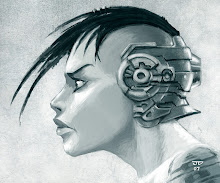
Riot control refers to the measures to control a riot or to break up a demonstration. This is typically accomplished by law enforcement officers, utilizing special weapons and tactics that intentionally minimize harm and prevent additional violence.

Equipment:
For personal protection, officers performing riot control will often wear protective riotsquad helmets and carry riot shields. These are designed to protect the wearer from the smaller threats posed by rioters, such as thrown objects, though some are bullet-resistant. If tear gas or other riot control agents are to be used, gas masks may also be worn.

The initial choice of tactics determines the type of offensive equipment used. The base choice is between lethal (e.g. 12 gauge shotgun) and non-lethal weaponry (e.g. tear gas, pepper spray, plastic bullets, Tasers, batons, and other incapacitants). The decision is based on the perceived level of threat and the existing laws; in many countries it is illegal to use lethal force to control riots in all but the most extreme circumstances.
Special riot hand weapons, such as the sjambok and lathi, may also be employed.

Vehicle-mounted water cannons may serve to augment personal weapons. Some of these are capable of adding dye to mark rioters or adding tear gas to the water.
In major unrest, police in armoured vehicles (such as Land Rovers) may be sent in following an initial subduing with firepower. Occasionally, police dogs are deployed.
Batons:
The traditional material for batons for most purposes is wood. However, rubber batons are common. The French CRS's baton is about 1.5 inches diameter and slightly over 2 feet long. The Russian police also use rubber batons, but some have had to use wood in areas where the winter frost gets cold enough to make rubber brittle. The British Army tends to use pickaxe handles. Collapsible batons are not typically used in coordinated riot control operations.

Tactics:
The front-line officers in a riot control are often fully armoured and carry weapons such as batons, designed to be in direct contact with the crowd. These officers use force and intimidation to subdue rioters and subsequently allow less heavily armoured, more mobile officers to arrest people.
In face of a greater threat, the riot police will be backed up with other officers equipped with riot guns to fire tear gas, rubber bullets, plastic bullets or beanbag rounds.
As a less aggressive step, mounted police may first be sent into the crowd. The might and height offered by the horse are combined with its training, allowing an officer to more safely infiltrate a crowd. Often batons are the only weapons used. However, in a hunger riot in Vienna in 1919, rioters resisted the police horses and killed two of them, and afterwards butchered the horses on the spot for their flesh.
Usually, when front-facing a riot, officers slowly walk in a line parallel to the riot's front, extending to both its ends, as they noisily and simultaneously march and beat their shields with their batons, to cause fear and psychological effects on the crowd.
The French CRS's tactics against a long demonstration march is to attack it at several points and chop it into segments, rather than to merely try to block it at its front end.

Tuesday, 5 February 2008
Riot Control
Posted by
Terra Glitch
at
00:34
![]()
![]()
Labels: Contemplation, Current Events, Dystopia, Writing
Subscribe to:
Post Comments (Atom)

3 comments:
very nice...
couple of days ago i was searcinh for police in riot gear (specifically japanese riot armor) and couldnt find pics this good...
keep it up cy ;)
@Cybrid, hah thanks man! Yeah when I saw those peruvian anti-riot pics I just had to post it. I hope you'll enjoy the other posts hehe. ;)
Very interesting,.. :)
Post a Comment